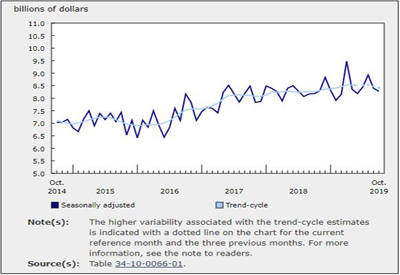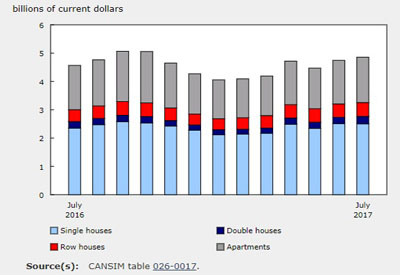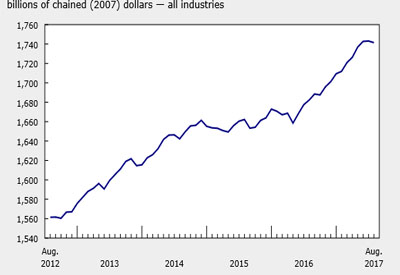The Surge of Women in the Workforce

By Paul Eitmant
Considering the United States may have its first women president, I started my brain cells working on the growth of women in our workforce.
Canada has already had 12 women who have served, or are serving, as the first minister of a Canadian government. Of these, one was prime minister of the country (Kim Campbell, 1993), eight were premiers of a province, and three were premiers of a territory.
An article from Statistics Canada looks at the number of women in the Canadian workforce. I found information interesting enough to share the highlights with you on our workforce.
The Canadian labour market has seen remarkable changes since the 1950s.
Computer-based technologies have helped automate workplaces. Globalization and the economic emergence of countries such as China and India have increased the volume of international trade and reshaped entire industries. The percentage of workers employed in unionized jobs, manufacturing jobs, or jobs covered by employer-sponsored pension plans has fallen. At the same time, Canadian workers have more formal education than workers in the 1950s.
One of the most substantial changes to the Canadian labour market is the participation, en masse, of women. Over the second half of the 20th century, women became far more involved in the workforce than ever before.
The labour force participation rate of women rises steadily from the 1950s to 1990
In the early 1950s, about one-quarter of women aged 25 to 54 participated in the labour market. That is, they had a job or were looking for one. In contrast, virtually every man in the same age group was participating in the labour market during this period.
However, women began increasing their presence in the labour market as social norms regarding gender roles evolved, new technologies such as electrical appliances reduced the time needed to perform household chores, families had fewer children and employment opportunities in the service sector increased.
From 1953 to 1990, the labour force participation rate for women grew steadily, rising from about 24% in 1953 to 76% in 1990. Meanwhile, the participation rate for men edged down from 96% in 1953 to 93% in 1990.
Women’s involvement in the labour force has risen at a slower pace since 1990
The early 1990s marked the beginning of a slowdown in the growth of women’s labour market participation. While their participation rate grew by 1.4 percentage points each year on average from 1953 to 1990, it has since grown by 0.3 percentage points each year on average.
As a result, the labour force participation rate of women reached 82% in 2014, compared with 91% for men.
Overall, the difference in the labour market participation rate between men and women narrowed from more than 70 percentage points in the early 1950s to less than 10 percentage points today. By 2014, women made up almost half (47%) of the entire Canadian workforce.
Chart 1: Labour force participation rates of men and women aged 25 to 54, 1953 to 2014

Higher participation, higher earnings
The increasing presence of women in the labour market led to a large rise in the median annual wages and salaries of women. Women’s earnings more than doubled between the mid-1960s and the early 2010s, rising from $15,700 in 1965 to $37,200 in 2010 (in 2014 dollars).
This increase can be partially explained by two other trends: a growing share of women working full time on a full-year basis, and a growing share of women employed in relatively well-paid occupations.
For example, while very few, if any, women were employed as financial auditors and accountants in the early 1950s, women aged 25 to 54 accounted for over half (58%) of the workforce in this occupational group in 2014.
Definition
Labour force participation rate: Total labour force expressed as a percentage of the population aged 15 and over. The participation rate for a particular group (age, sex, marital status, geographic area, etc.) is the total labour force in that group expressed as a percentage of the population 15 years of age and over in that group.
References
Ferrao, V. 2010. Paid work. Women in Canada: A Gender-Based Statistical Report. Sixth edition. Statistics Canada. Catalogue 89-503X.
Goldin, C. 2006. “The Quiet Revolution That Transformed Women’s Employment, Education, and Family.” American Economic Review. Vol. 96, No. 2, 1-21.
We continue to see more women in the electrical industry. Jim Taggart, EFC President & CEO, stated the following in a 2015 article: “I have been told members that, for the long-term health of the electrical industry, it is important for women be fairly represented.”
I sincerely believe in this statement and know it to be fact. According to a study conducted by Electricity Human Resources Canada (EHRC), “women represent only one quarter of the electricity and renewable energy workforce.” EFC’s own research indicates that EFC members are projecting business growth over the next three years. Businesses are also expecting to replace employees as a result of imminent retirement and possible employee turnover. With overall Canadian demographics skewed in a downward shift, the industry will need to realign its employment intentions to hire entry-level employees in order to keep pace with the demands of the marketplace.
I feel we all need to pay more attention to this growing sector in our industry.
Paul Eitmant is President and CEO of IP Group International, which serves the needs of business-to-business enterprises in over 30 countries worldwide by adding specialized expertise to the business planning and implementation process; Tel: 480.488.5646; paulipgroup@cox.net.











